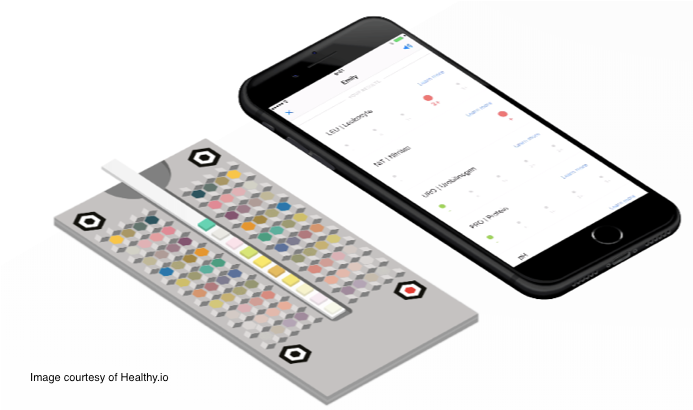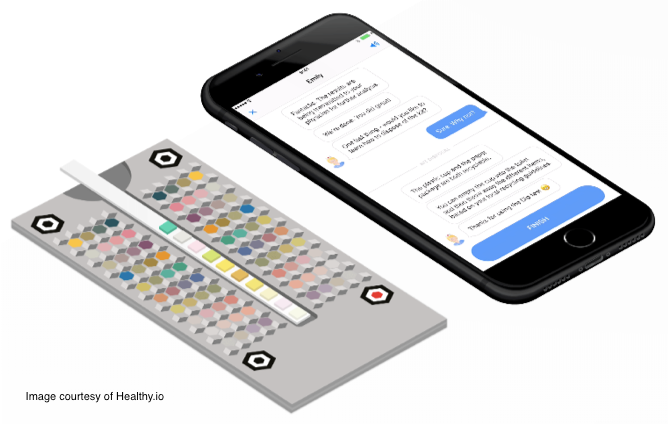Article
App review: Dip.io brings urinalysis to your smartphone
Author(s):
Spyridon P. Basourakos, MD, and Alexis E. Te, MD, review the Dip.io app.
One in three Americans is at risk for kidney disease, but early detection is often hampered by the inefficiency and inconvenience of the testing process. Healthy.io has pioneered a home testing service that facilitates diagnosis of potentially reversible renal dysfunction, which could help curtail the exorbitant economic burden of complications from chronic kidney disease.
Step 1: The patient obtains a kit with a color board and follows the instructions provided by the app.
Dip.io is an FDA-approved, home-based urinalysis test. It allows smartphones to function as a medical diagnostic tool through the corresponding Dip.io app. Introduced in 2018, Dip.io has already been commercialized in European countries and the United Kingdom. It has also been introduced and studied in the U.S. A study involving the National Kidney Foundation and Geisinger Health has suggested that the product allows kidney patients to actively participate in and adhere to their medical care. Dip.io smartphone urinalysis kits can also help improve albuminuria screening, as well as improve management of chronic kidney disease.
Step 2: After dipping the stick in urine, the patient inserts it into the color board.
Dip.io is modeled after the urinalysis dipstick, which is able to measure 10 different parameters. The parameters are analyzed with a semi-quantitative method and include leukocytes, nitrates, glucose, ketones, protein, blood, pH, urobilinogen, bilirubin, and specific gravity. Furthermore, the kit provides a semi-quantitative analysis of microalbumin (10-150 mg/L), creatinine (10-300 mg/dL), and albumin-to-creatinine ratio (mg/g).
Step 3: The color board is scanned with the smartphone camera and submitted for analysis.
Next:"The app provides detailed instructions as well as a “virtual nurse chatbot” to guide the patient through the steps"
The app provides detailed instructions as well as a “virtual nurse chatbot” to guide the patient through the steps. The kit comes with disposable test strips that can be accurately interpreted by the Dip app once the patient scans the dipstick against the color board. The app provides test results immediately to both patients and their clinician through an electronic platform (figures). Urinalysis based on smartphone technology has been suggested to be equivalent to lab-based devices.


Steps 4 and 5: The results are made available to the patient and the provider electronically.
Healthy.io kits can be purchased by health care organizations, but not yet by end consumers in the U.S. In the future, the availability of kits across pharmacies, as is the case in the UK, will help further improve access to preventive care and management of chronic kidney disease.
Spyridon Basourakos, MD
Alexis E. Te, MD
Dr. Basourakos is a urology resident at Weill Cornell Medicine/New York-Presbyterian, and Dr. Te is professor of urology, Weill Medical College of Cornell University, Weill Cornell Medicine/New York-Presbyterian, New York. Acknowledgement: The authors appreciate Amalia Katz-Doron of Healthy.io for providing information on the Dip.io app.
Newsletter
Stay current with the latest urology news and practice-changing insights — sign up now for the essential updates every urologist needs.
















